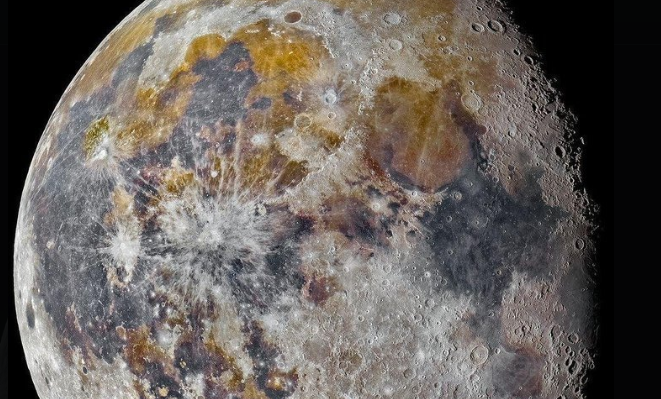- Live Science: Offers high-resolution photos of the Supermoon Blue Moon of 2024, along with other stunning lunar images. You can check them out here.
- EarthSky: Features a collection of the best Super Blue Moon images of 2024 from around the world. You can view them on their community photos page here.
Kurdish astrophotographer Darya Kawa Mirza has achieved a remarkable feat in lunar photography with his latest work. After four days of meticulous observation and capturing, Mirza unveiled what he calls the “clearest and sharpest Moon image” he has ever taken. This extraordinary photograph, boasting a resolution of 159.7 megapixels, was created by stacking over 81,000 individual images. The final image file, a massive 708 gigabytes in size, provides a breathtaking view of the moon’s topography with unparalleled clarity. By combining four different lunar phases and their corresponding shadow areas, Mirza managed to reveal intricate surface details previously unseen, presenting the moon as a flat disk with a complex and detailed surface.
Kurdish astrophotographer Darya Kawa Mirza has released what he calls the most detailed picture of the Moon ever taken. #Moon #Science #Space #Astrophotography https://t.co/Y2xWDrsGeJ
— Mashable India (@MashableIndia) September 2, 2024
To accomplish this incredible image, Mirza used a Skywatcher Flextube 250p Dobsonian telescope, which he modified on an Equatorial Mount NEQ 6pro. He utilized two different cameras: a Canon EOS 1200D for capturing the mineral content and a ZWO ASI 178mc for capturing finer details. Impressively, Mirza achieved this without using any artificial intelligence, showcasing the skill and dedication required to create such a masterpiece.
Mirza’s moon photograph, shared on Reddit, sparked lively discussions among astronomy enthusiasts. The image’s vibrant colors, particularly the reddish and blue-tinted areas, led to questions about their authenticity. One user clarified that while these colors are not what the human eye would naturally see, they have been enhanced to highlight geological differences on the lunar surface. The reddish areas indicate regions with high iron and feldspar content, while the blue areas suggest a higher concentration of titanium.
- ExtremeTech: Provides a detailed account of a “ridiculously detailed” photo of the moon created using over 200,000 images, considered the highest resolution image of the moon yet. Visit the page here
Another user noted that these color enhancements serve as a valuable tool, much like advanced detection technologies, allowing viewers to observe geological features that might otherwise be invisible to the naked eye. Just as someone with color blindness might see muted or indistinguishable shades, the human eye might not be sensitive enough to detect these subtle differences without enhancement. Thus, Mirza’s photograph offers a rare glimpse into the moon’s composition that would otherwise remain hidden, marking a significant achievement in the field of astrophotography.
Kurdish astrophotographer Darya Kawa Mirza has taken the most advanced photo of the moon. pic.twitter.com/HyWvRkl8zU
— The NewsWale (@TheNewswale) September 1, 2024
Mirza’s groundbreaking image follows another notable lunar photograph captured by NASA astronaut Matthew Dominick from the International Space Station, which depicted the moon setting over the Pacific Ocean. However, Mirza’s dedication and the exceptional clarity of his photograph set it apart, establishing a new milestone in lunar exploration through the art of photography.
Key Points:
i. Kurdish astrophotographer Darya Kawa Mirza created a stunning moon image by stacking over 81,000 photos, resulting in a 159.7-megapixel masterpiece.
ii. The photograph reveals previously unseen lunar details and was made using specialized equipment without artificial intelligence.
iii. Enhanced colors in the image highlight geological differences on the moon’s surface, offering unique insights into its composition.
iv. The photo sparked discussions about the use of color enhancement to reveal features not visible to the naked eye.
v. Mirza’s work sets a new standard for lunar exploration and photography, showcasing his dedication and skill in astrophotography.
TL Holcomb – Reprinted with permission of Whatfinger News

